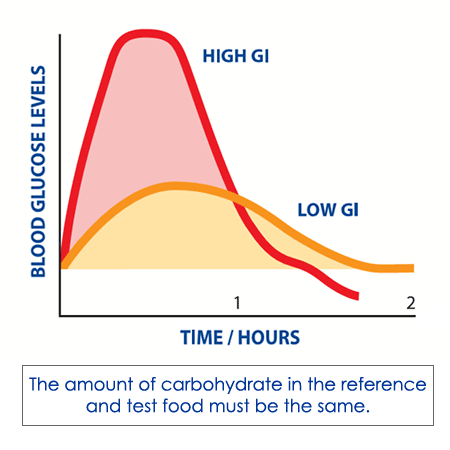If you’ve been watching TV lately, you might have noticed some food product commercials talking about something called Glycaemic Index, or GI as it’s more commonly known. So, what is it?
GI is a ranking of carbohydrates (e.g. bread, pasta, rice, yoghurt) on a scale from 0-100 according to how much they raise blood sugar levels after eating. Foods are categorised as low GI, medium GI or high GI.
Low GI = less than 55
Medium GI = between 55 and 70
High GI = greater than 70
Foods with a high GI are quickly digested and absorbed by our bodies, which results in rapid changes to blood sugar levels. Low-GI foods are digested and absorbed more slowly, and produce gradual rises in blood sugar and insulin levels. The graph below illustrates the different effects on blood sugar levels of high and low GI foods.

Eating low GI foods can help you to feel fuller for longer after eating, by providing a gradual, continuous supply of energy- making low GI foods useful for weight management. Low GI foods are especially important for people with diabetes, as they can help to keep blood glucose levels stable, by providing a slower, more sustained release of glucose into the bloodstream
It is important to know that GI is not an indication of how healthy a food is; for example, ice-cream has a low GI! Numerous factors can affect the GI of a food, including ripeness, protein, fat and soluble fibre content of the food.
Both high GI and low GI foods can be included in a healthy diet.
If you would like to learn more about Glycaemic Index, visit;
University of Sydney Glycaemic Index website or, Better Health Channel
Rachael Thompson
Yakult Dietitian APD
